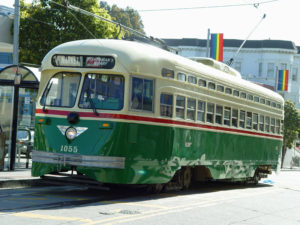
United States are built around the cars. In fact, the car is about a personal freedom: you do not have to depend on anyone to get to the place you want. There is a great system of highways and freeways in place for making our trips as comfortable as possible. It is not terribly expensive to buy and maintain the car. Different models are available on the market, designed to fit any wallet. But it is still an expense. For example, I normally spend around $3K per year for inexpensive car service and fuel, combined with insurance. It may easy increase up to $6K for the years, when major regular service is required. You may want to add insurance deductible, when accident happens. Also, there are too many cars on our roads. They all are contributing into the traffic and pollution, especially in densely populated metropolitan areas. Is it possible to live in United States without a car? Let us find out.
You definitely do not want to live without a car in a remote rural area. It is plainly impossible to do anything, when there is no public transportation available nearby. Therefore, in this article I would like to focus on metro areas. But do we have to limit our choice to NYC, Washington DC, Chicago, Boston, San Francisco and similar noisy crowded cities with homeless people, drugs and criminal activities spread around? This is the question I asked myself in the past, visiting different cities across the countries. I believe, some of them would make a nice option for living without a car.
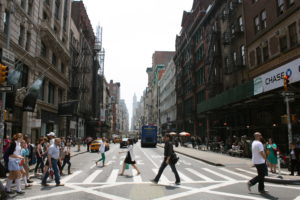
But let us discuss places where it is actually better not to have a car. The first and obvious choice would be New York City. It has a terrible traffic and an excellent subway system. In addition to that, there are countless bus routes and some ferries (worth to mention a free ferry to and from Staten Island). And of course Grand Central Terminal, where people take a train to suburbs or other cities. There is a great choice of different neighborhoods across the City, completely covered by public transportation. But the cost of living in NYC is generally very high, partially due to the high taxes. Some lower cost areas comfortable for living can be still found, Brooklyn for example. It is also worth to mention, that subway has a direct connection to free AirTrain taking riders to the largest nations’s airport JFK. As regarding suburbs, situation may vary: you have to stay close to railroad station or town center in order to live without a car. And there may be still a need for a car to reach some important place like a doctor’s office, even if you do not have to commute to work every day.
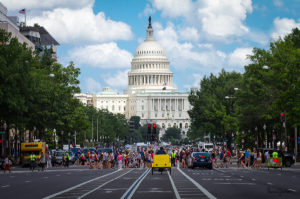
Another city with a great public transportation options is Washington DC. The system of bus and rail service is available almost everywhere in the City and even suburbs as far as Virginia or Maryland. Also, there are excellent train connections to Baltimore, NYC and other cities. Washington Metro rail service looks cleaner and nicer than purely functional subway in NYC. There is a direct connection to Reagan airport with green and yellow lines, however larger Dulles airport can be reached by slower bus service only. It is easy to live without a car within the city limits, as well as near-by suburbs like my favorite Alexandria or Arlington. All areas west and north of Capitol are considered safe and some of them are reasonably priced. But it would be still a good idea to have a car, if you live outside of the area covered by rail or bus service.
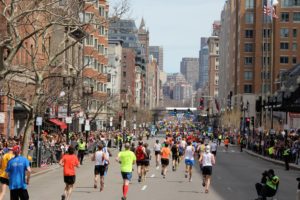
Chicago and Boston are other cities with carefully developed transportation system. Although they do not have a system as large as NYC or Washington DC, the entire downtown area and even certain suburbs are within the reach by either a train or a bus. In fact, the great advantage of Chicago’s rail system is a direct connection to O’Hare International Airport: the train would deliver you right into the terminal, like in Europe. Over the decades, Chicago was well known as the criminal center of the world. But situation improved dramatically: downtown area is much safer and comfortable to live now, with a great choice of good looking high rise condos, shopping options and all that for very reasonable price. Boston’s MBTA is also an excellent example of subway, buses, commuter rail and ferry routes delivering people almost everywhere within the City. There is a subway connection to Logan airport using free shuttle bus. But cost of living in Boston is higher, compared to Chicago or Washington DC.
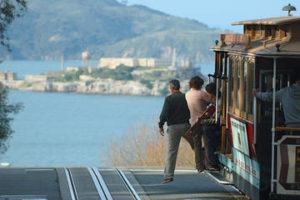
Other cities, although quite populated, definitely can not compete with NYC, Washington DC, Chicago or Boston in public transportation options and coverage. There are people, living without a car in San Francisco. BART service (which can be considered as a sort of subway system) although running through downtown and financial district to SFO and East Bay communities, is available to the small part of the City. Other parts of San Francisco are served relatively well by light rail and bus Muni system, but it can be slow to deliver you from Embarcadero Bay waterfront to Ocean Beach for example. Even fewer options are available to the residents of Oakland or San Jose. In fact, most of South Bay communities are well covered by VTA bus routes. But the bus service in this area is really slow and inefficient. You need to live closer to the light rail station to leave your car at home, but light rail is available in selected areas only. It also takes an extremely long time to ride VTA light rail from Blossom Hill to Mountain View, for example. Still, many people use BART, VTA and Caltrain for commute to work or leisure activities.
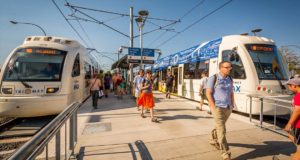
Among smaller cities, it is worth to mention Portland and San Diego. There is no subway, and it may not be required as the scale of city limits is not as huge as NYC. However, both are covered very well with light rail and bus service. It is definitely possible to live in Portland downtown area with a car because of excellent TriMet system. Also, I would argue it is possible to live without a car in some smaller cities outside of Portland such as Hillsboro, Beaverton or any other towns accessible through the MAX service. Portland international airport is also directly connected to MAX. Plenty of private offices or government services, as well as Oregon State University and associated hospital are located in downtown area, where anyone can easy walk from bus or light rail station to pretty much anywhere. San Diego’s MTS is another, may be even smaller scale example of well designed system for medium size metro area. There are three trolley (light rail) lines and countless bus routes, basically covering the entire downtown and some suburbs. It is possible to take a trolley to downtown area, San Diego State University, San Diego Airport (connected through shuttle) or even Mexican border. But like in Portland or San Jose, you are out of luck if you live in the area served by bus service only as it can be slow and inefficient.
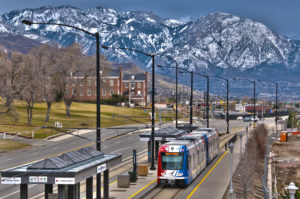
There are two other cities worth to mention, as they seem to have a really good public transportation: Minneapolis and Salk Lake City. Like in Portland or San Diego, there is no subway system but light rail and bus services are quite efficient and can take people to different places, mostly within the city limits. The rare availability of public transportation is combined with very reasonable cost of living at both places, which make them standing unique against others discussed above. Unfortunately, I have never been at these places and did not draw my own opinion, but according to others both cities are friendly to hikers and bikers. I also wanted to warn, that there are many other large size metro areas like Houston, TX or Phoenix, AZ for example, where you need a car even if you live in downtown. This is because public transportation options are really limited in these cities.
The bottom line is that there are places in United States, where you can live without a car. But these places are typically limited by large or medium size metro areas in certain states, and very likely you end up with a higher cost of living, combined with criminal and drug activities. This is a reality, we are facing. But there is a clear trend to make more places comfortable for walking and enjoying life without a car. In fact, there are some smart living neighborhoods or even cities which already provide this option. Santa Clara’s Rivermark Village is one great example, and The City of Bee Cave is another example which is my favorite little town around Austin, TX. At both places, you can easy walk, enjoy great parks and shopping without ever using a car.
